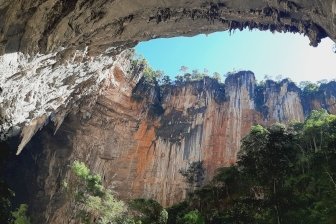Brazil
Cavernas do Peruaçu National Park
Community Perspective: Patrik has described his worthwhile visit, but warns of the time it takes to get to the park.
Site Info
Official Information
- Full Name
- Cavernas do Peruaçu National Park (ID: 1124)
- Country
- Brazil
- Status
-
Nominated 2025
Site history
History of Cavernas do Peruaçu National Park
- 1998: Added to Tentative List
- Added to tentative list
- Criteria
- vii
- viii
Links
- UNESCO
- whc.unesco.org
All Links
UNESCO.org
- whc.unesco.org — whc.unesco.org
Community Information
- Community Category
- Natural landscape: Karst landscapes and caves
Travel Information
Recent Connections
News
No news.
Community Reviews
Show full reviews
There are actually two similar sites on the tentative list, this one submitted 16/09/1998, and 'Canyon du Rio Peruaçu, Minas Gerais', submitted 11/03/1998. The latter is submitted by IPHAN, the institute that protects cultural sites in Brazil, but strangly this organization marked it a natural site. The organisation submitting this site is IBAMA, which manages the natural parks, and IBAMA is marking it as a mixed site. As both descriptions talk about archeology, it seems also the first submission should have been a mixed site. Anyway, IBAMA took 6 months longer and apparently took this time to write a proper description, so I will consider only this one.
In his review of Diamantina, Wojciech Fedoruk points out that Cavernas do Peruaçu NP is relatively close by. This drew my attention and I started looking into the possibility of visiting. I reserved three days in my schedule for a visit. Then, I found there is a daily Transnorte bus from Diamantina to Montes Claros at 6.00h, arriving 10.30h. However the busses to Januaria, which is still 40 kilometers from Peruaçu, leave at 10.00h and 18.00h. Very inconvenient, but I contacted the guesthouse nearest to the park entrance and the owner Kescia turned out to be a miracle of organising. I was lucky to get a ride from one of the members of their whatsapp 'hitchhike' group from Montes Claros straight to the guesthouse for only BRS 80. Having left Diamantina at 6.00h, I arrived there 15.15h.
The next day …
Keep reading 0 comments